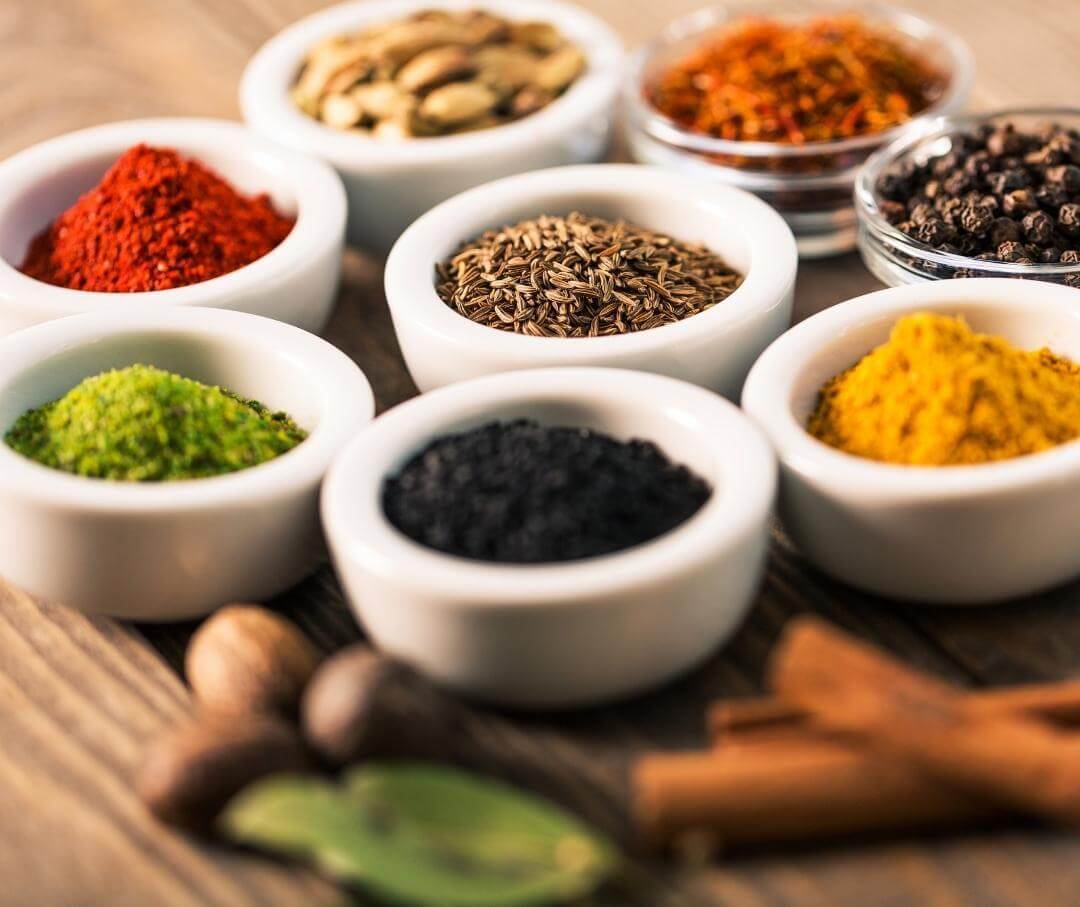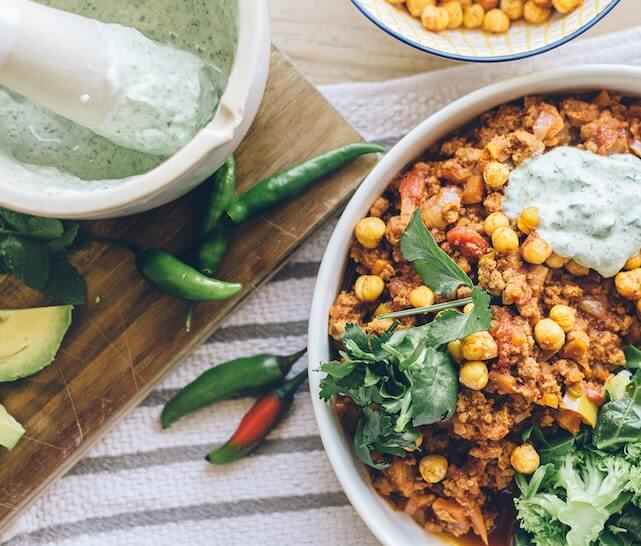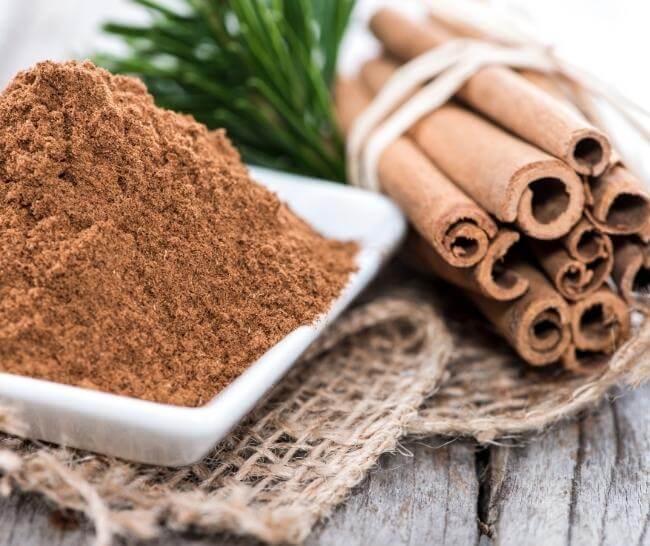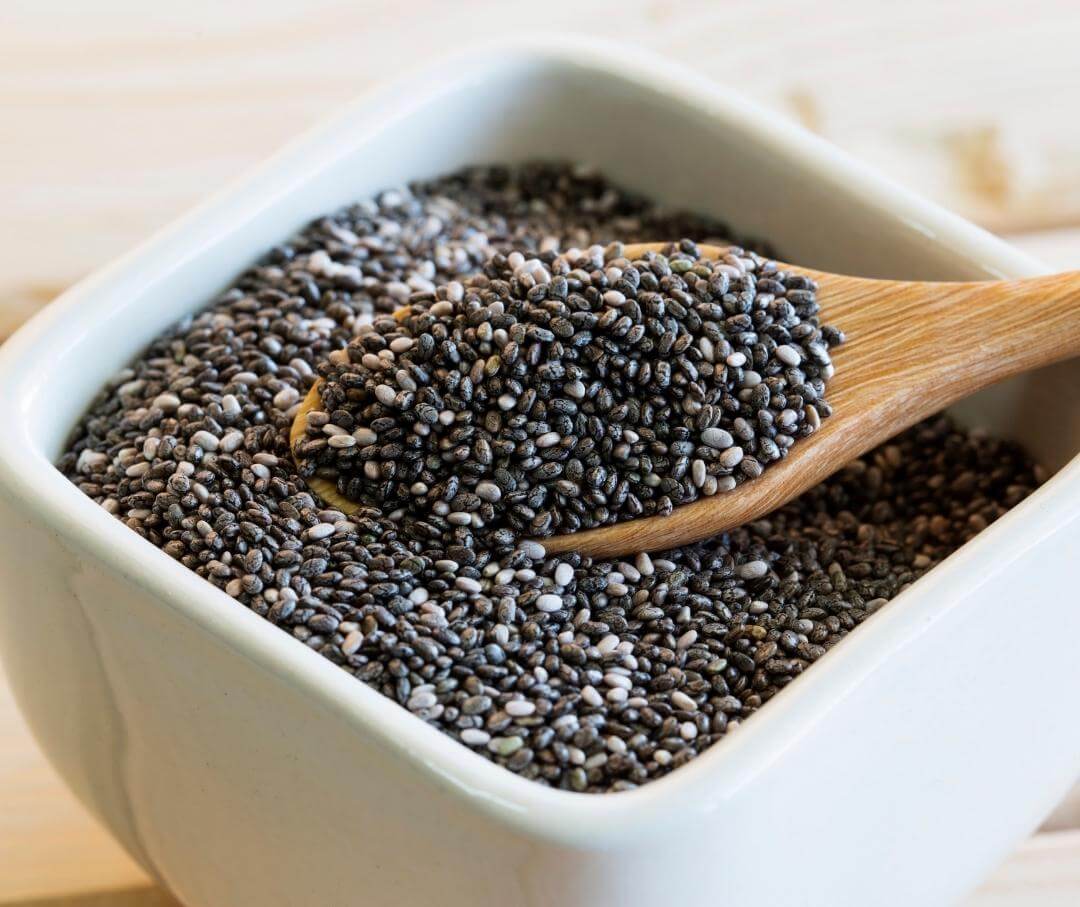When you eat carbohydrates your body breaks them down into glucose for energy. The energy is either used immediately or stored for later use, usually in the form of triglycerides. Triglycerides are a type of fat found in your blood. They are the body’s preferred source of energy because they are readily available and have twice the amount of energy of carbohydrates. A poor diet combined with a lack of exercise can raise your triglycerides to unhealthy levels, and increase your risk of weight gain, heart disease, and diabetes.
In this article, you’ll learn which foods are most likely to raise triglyceride levels and we will give you a sample meal plan with foods that help keep your numbers in a healthy range.
By Julia Zakrzewski, RD
{{mid-cta}}
Why Your Triglycerides Levels Matter
High levels of triglycerides, also called hypertriglyceridemia, can be an indicator that your metabolic health needs a little TLC. Too many triglycerides in the blood increase your risk of cardiovascular disease, liver disease, weight gain, and carrying more adipose tissues.
Adipose tissue are hormonally active tissues that can cause an oversecretion of insulin and may lead to insulin resistance.¹ Resistant insulin can not efficiently remove glucose from your bloodstream, and blood sugar levels can rise. This increases your risk of diabetes.
Is It Common to Have High Triglycerides?
Elevated triglyceride levels are becoming more common. The American Heart Association (AHA) reports that one-third of Americans have high triglycerides.²
For most people there will be no warning signs or symptoms to indicate their triglyceride levels have gone up; that’s why it's important to have bloodwork done regularly. These are the cutoffs for triglyceride levels from a blood test:³
- An acceptable value is <1.70mmol/L or <150mg/dL.
- A high reading is a value >1.70mmol/L or 150mg/dL.
- A very high reading is a value >10mmol/L or 880mg/dL.
Very high levels of triglycerides can lead to a painful bout of pancreatitis, which is inflammation of your pancreas.² People who have acute pancreatitis will need to go to the hospital for treatment and rest.
Having high triglycerides for a long period of time can contribute to the hardening of plaque in your arteries. This makes them narrow and makes it more difficult for nutrient and oxygen-rich blood to flow to your vital organ, increasing your risk of heart attack, heart disease, and stroke.
Why Do People's Triglyceride Levels Get Too High?
There are a few scenarios that can lead to high levels of triglycerides:²
- Genetics: your DNA and body makeup are predisposed to having higher levels of triglycerides.
- Diet: consuming a diet high in refined carbohydrates and added sugars can increase your triglycerides, especially if you are eating more calories than you are burning off. Large portion sizes of starchy foods that do not get burned off can also raise your triglycerides.
- Alcohol: all forms of alcohol can raise your triglyceride numbers.
- Being sedentary: exercise and daily movement are the best way to fire up your muscles and burn through your energy stores (first glycogen and then triglycerides).
You can make lifestyle changes to bring down your triglyceride numbers, but some people may require medication.
Foods and Drinks to Avoid if You Have High Triglycerides
There are foods and drinks that should be avoided when you have high triglycerides.² These include:
- White flour carbs: bagels, bread, pasta, and most breakfast cereals.
- Sweetened products: flavored yogurts, flavored milk (including plant-based varieties).
- Baked goods: muffins, cupcakes, donuts, cookies.
- Ultra-processed carbs: instant ramen soups, french fries, chips, fried crackers.
- Large portions of starchy foods: everything on this list and also rice and potatoes.
- Sugar-sweetened beverages: fruit juices, smoothies, soda, energy drinks, seasonal drinks (pumpkin spice latte).
- Alcoholic beverages.
Even though water can sound less exciting than soda, the simple swap can make a big difference in your overall health.
An article from 2013 summarized the key findings from all major publications about the health effects of soda consumption.⁴ They found that people who regularly drank soda consumed large amounts of refined sugar and were at an increased risk of obesity, diabetes, cardiovascular disease, and metabolic syndrome.
Foods and Drinks That Can Help Lower Triglycerides
There are proven foods that you should include in your diet to help lower your triglyceride levels. These include:
- Fish oil: omega-3-fatty acid has been shown to improve triglyceride levels, especially in people who were not already taking supplements or eating fish. The results are even more significant when opting for consuming fish regularly (salmon and trout) over supplements.⁵,⁶
- High fiber foods: fiber is found in vegetables, fruits, nuts and seeds, whole grains, and beans (lentils, kidney beans, garbanzo beans, etc.). Aim for 25-35g of fiber per day from a variety of foods.
- Curcumin: curcumin is a naturally occurring compound in turmeric that gives the spice a yellow color. It is rich in antioxidants that can help lower triglyceride levels.⁷ Sprinkle turmeric into your soups, stir-fries, and stews. It has a deep musky flavor but it is mild and easily blends with other spices.
- Spirulina: a powdered blue-green algae that is rich in antioxidants, just like turmeric. You can buy it in capsules from your local pharmacy or in powdered form. A study showed that people who took 1g per day of Spirulina for 3 months had decreased levels of triglycerides.⁸
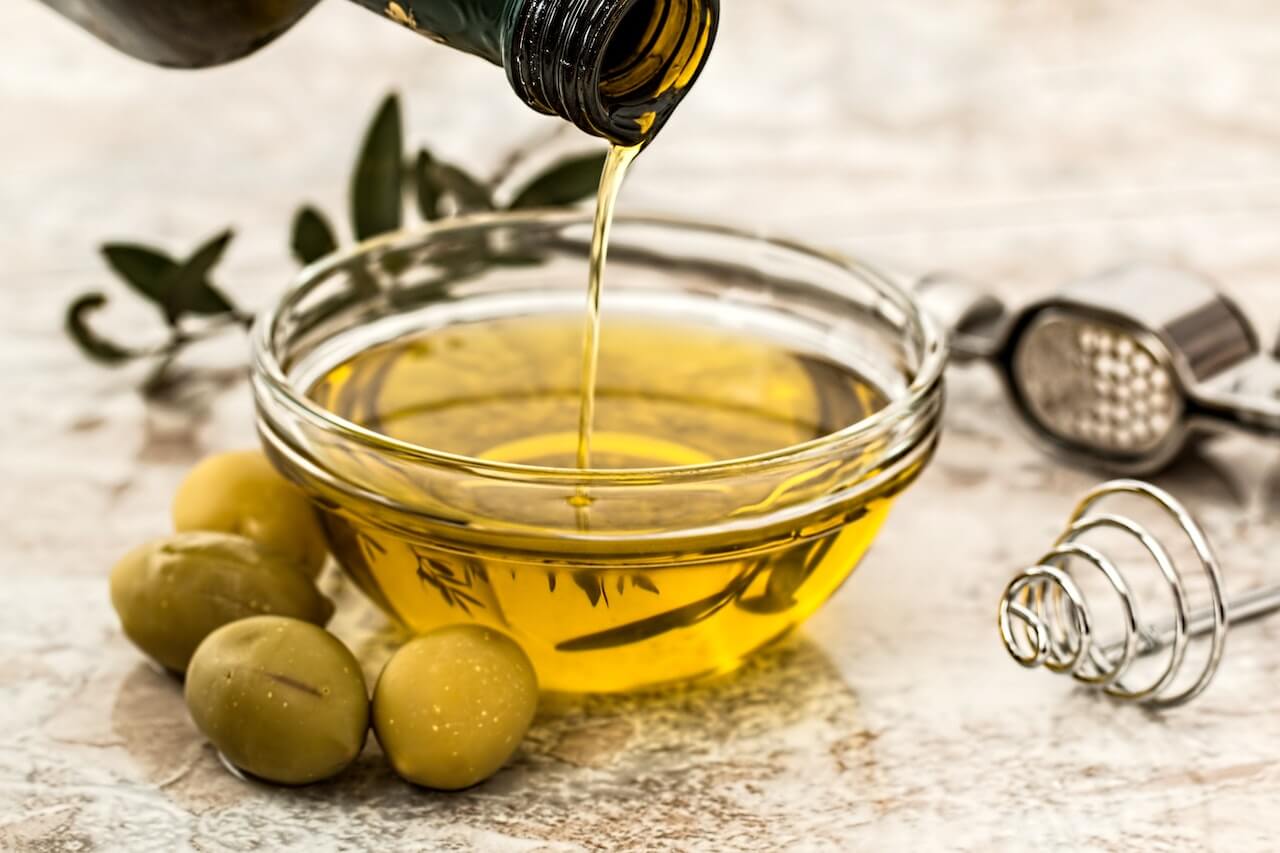
Here is a 3 Day Meal Plan for Lowering Triglyceride Levels:
Day 1
- Breakfast: two poached eggs served over half an avocado, flavored with lemon juice and cracked black pepper, served with a cup of unflavored greek yogurt and berries, topped with cinnamon.
- Snack (optional): a handful of unsalted nuts with fresh slices of apple or oranges.
- Lunch: Mediterranean chickpea salad with tomatoes, cucumber, feta cheese, and red onion. You can add tuna or grilled chicken to your salad for an added boost of protein.
- Dinner: grilled salmon with lemon and garlic, served with roasted broccoli and cauliflower (seasoned with your favorite blend), and a serving of brown rice.
- Dessert: baked peach halves dusted with cinnamon, nutmeg, and a drizzle of honey. You can also toast chia seeds (a high fiber seed that also contains omega-3 fatty acids) and garnish them on your fruit for added crunch.
Day 2
- Breakfast: apple pie overnight oats made with whole rolled oats, your favorite milk (can be plant-based), chopped unsalted pecans, diced apple, and cinnamon.
- Snack (optional): fresh-cut vegetables paired with hummus.
- Lunch: Bunless quinoa and black bean burgers drizzled with an avocado lime dressing. Garnished with fresh tomato, lettuce, and red onion.
- Dinner: cajun shrimp with sweet potatoes,, paired with a fresh green salad.
- Dessert: simple charcuterie board with your favorite cheeses and berries.
Day 3
- Breakfast: Avocado spread onto a slice of whole grain toast, garnished with ground flax seed, fresh lemon juice, and black pepper. You can add an egg for a boost of protein.
- Snack (optional): serving of unflavored greek yogurt with nuts and sliced pears.
- Lunch: curried vegetable soup with a few slices of cheese on the side.
- Dinner: Kitchen sink salad! Take whatever fresh (or roasted!) vegetables you have and throw them into a big salad. Add a ¼ cup cooked quinoa and top with avocado and a drizzle of EVOO.
- Dessert: fresh fruit with your favorite nut butter.
Diets That Can Help Lower Triglycerides
There is evidence that the following diets can be beneficial for lowering triglycerides:
- Mediterranean: this diet is rich in lean protein, fiber, and healthy fats including omega-3 fatty acids and monounsaturated fats. All of these components help to lower triglycerides. Signos has covered this diet extensively on the blog and has tips to help you follow this diet.
- Low carb: we know that if we don’t burn off our carbs they will be eventually stored as triglycerides. Reducing your carb intake and following a low-carb diet can help lower your triglycerides.¹⁰

How Long Does It Take to Lower Triglycerides?
Bringing down your triglycerides doesn’t take as long as you think. This large scientific review from 2020 showed that people were successful in lowering their levels in less than six months while following a reduced-carb diet.⁹ People who stuck with the changes for longer than six months saw an even greater decrease in triglyceride levels.
The Takeaway
Your body will always create triglycerides because it is a convenient way to store extra energy. But, too much stashed away for later can lead to health problems. Outstanding high triglyceride levels increase your risk of heart disease, diabetes, liver disease, and weight gain.
To keep your numbers in the target range, decrease your intake of alcohol, and refined and processed foods. Include more fiber-rich options (such as fruits, vegetables, nuts and seeds, and whole grains) in your meals and snacks. Try to eat omega-3-rich fish like salmon, trout, or even mackerel, three times a week.
Increasing your physical activity is really important when managing triglycerides. Daily movement will help burn through your energy stores and reduce the likelihood of elevated numbers.
Check out this recent blog article for more ideas on which foods to eat to support your metabolic health.
- Item 1
- Item 2
- item 3
Topics discussed in this article:
References
- Keirns, B. H., Sciarrillo, C. M., Koemel, N. A., & Emerson, S. R. (2021). Fasting, non-fasting and postprandial triglycerides for screening cardiometabolic risk. Journal of nutritional science, 10, e75. https://doi.org/10.1017/jns.2021.73
- Miller, M., Stone, N. J., Ballantyne, C., Bittner, V., Criqui, M. H., Ginsberg, H. N., Goldberg, A. C., Howard, W. J., Jacobson, M. S., Kris-Etherton, P. M., Lennie, T. A., Levi, M., Mazzone, T., Pennathur, S., American Heart Association Clinical Lipidology, Thrombosis, and Prevention Committee of the Council on Nutrition, Physical Activity, and Metabolism, Council on Arteriosclerosis, Thrombosis and Vascular Biology, Council on Cardiovascular Nursing, & Council on the Kidney in Cardiovascular Disease (2011). Triglycerides and cardiovascular disease: a scientific statement from the American Heart Association. Circulation, 123(20), 2292–2333. https://doi.org/10.1161/CIR.0b013e3182160726
- Hypertriglyceridemia Management According to the 2018 AHA/ACC Guideline. (2019, January 11). American College of Cardiology. Retrieved September 29, 2022, from https://www.acc.org/latest-in-cardiology/articles/2019/01/11/07/39/hypertriglyceridemia-management-according-to-the-2018-aha-acc-guideline#:%7E:text=The%202018%20ACC%2FAHA%20classifies,150%20mg%2FdL%20or%20above.
- Bray G. A. (2013). Energy and fructose from beverages sweetened with sugar or high-fructose corn syrup pose a health risk for some people. Advances in nutrition (Bethesda, Md.), 4(2), 220–225. https://doi.org/10.3945/an.112.002816
- Axelrod, L., Camuso, J., Williams, E., Kleinman, K., Briones, E., & Schoenfeld, D. (1994). Effects of a small quantity of omega-3 fatty acids on cardiovascular risk factors in NIDDM. A randomized, prospective, double-blind, controlled study. Diabetes care, 17(1), 37–44. https://doi.org/10.2337/diacare.17.1.37
- Zibaeenezhad, M. J., Ghavipisheh, M., Attar, A., & Aslani, A. (2017). Comparison of the effect of omega-3 supplements and fresh fish on lipid profile: a randomized, open-labeled trial. Nutrition & diabetes, 7(12), 1. https://doi.org/10.1038/s41387-017-0007-8
- Thota, R. N., Acharya, S. H., & Garg, M. L. (2019). Curcumin and/or omega-3 polyunsaturated fatty acids supplementation reduces insulin resistance and blood lipids in individuals with high risk of type 2 diabetes: a randomised controlled trial. Lipids in health and disease, 18(1), 31. https://doi.org/10.1186/s12944-019-0967-x
- Mazokopakis, E. E., Starakis, I. K., Papadomanolaki, M. G., Mavroeidi, N. G., & Ganotakis, E. S. (2014). The hypolipidaemic effects of Spirulina (Arthrospira platensis) supplementation in a Cretan population: a prospective study. Journal of the science of food and agriculture, 94(3), 432–437. https://doi.org/10.1002/jsfa.6261
- Dong, T., Guo, M., Zhang, P., Sun, G., & Chen, B. (2020). The effects of low-carbohydrate diets on cardiovascular risk factors: A meta-analysis. PloS one, 15(1), e0225348. https://doi.org/10.1371/journal.pone.0225348
- Dong, T., Guo, M., Zhang, P., Sun, G., & Chen, B. (2020). The effects of low-carbohydrate diets on cardiovascular risk factors: A meta-analysis. PloS one, 15(1), e0225348. https://doi.org/10.1371/journal.pone.0225348






